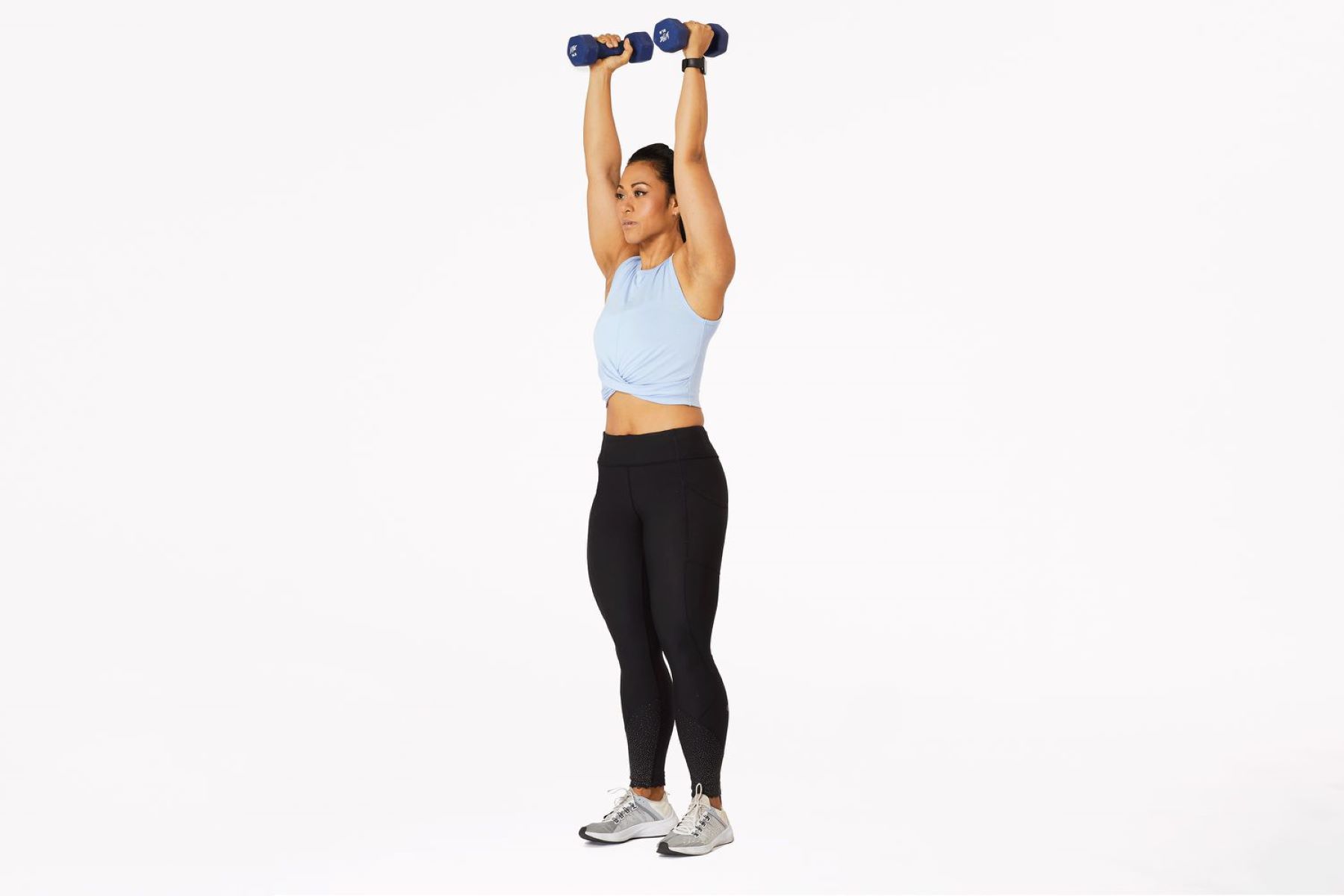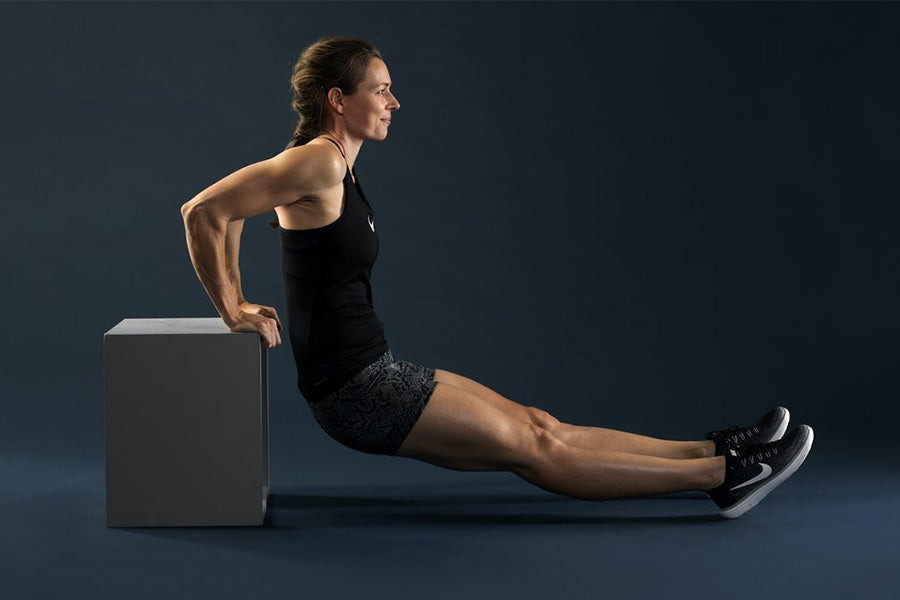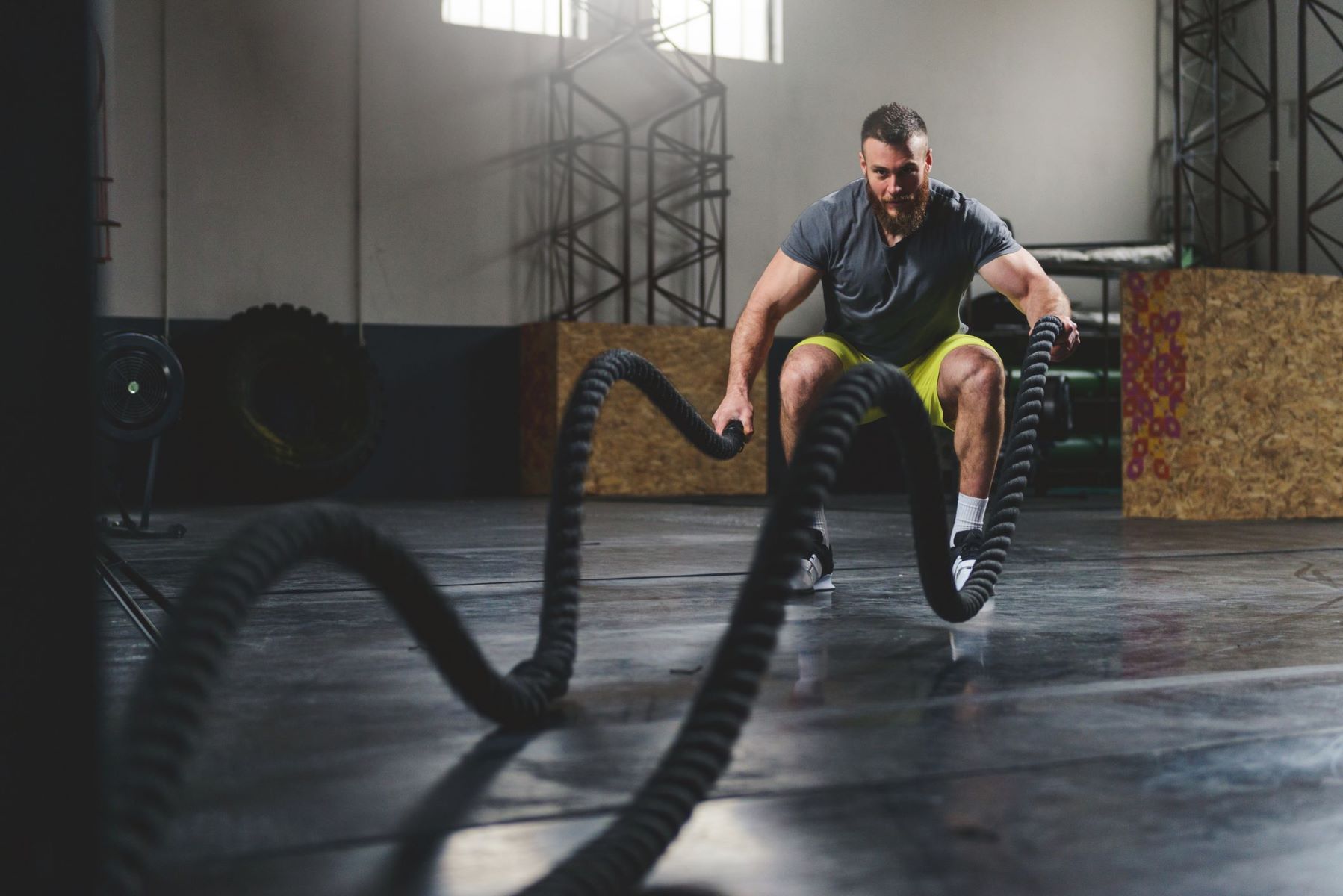

Featured
How To Workout Your Deltoids
Modified: January 2, 2024
Get stronger and more defined deltoids with our featured workout guide. Learn effective exercises and techniques to target and shape your shoulder muscles. Start building impressive shoulders today!
Introduction
Welcome to the world of deltoid workouts, where we will explore the best exercises and techniques to develop and define your deltoid muscles. If you’re looking to sculpt your shoulders and achieve that wide and V-shaped upper body, then you’ve come to the right place.
The deltoids, or shoulder muscles, play a pivotal role in strengthening and stabilizing the shoulder joint. They consist of three heads: the anterior (front), medial (side), and posterior (rear) deltoids. Targeting all three heads with specific exercises is essential for overall deltoid development.
Why should you prioritize deltoid workouts? Well, having well-developed deltoids not only enhances your physique but also improves your overall upper body strength and posture. Strong deltoids can assist in various daily activities, such as lifting objects, carrying bags, and even participating in sports.
Before we delve into the various deltoid exercises and training principles, it’s crucial to understand the basic anatomy and function of the deltoid muscles. This knowledge will help you better comprehend the exercises and their impact on your shoulder muscles.
Throughout this article, we will explore the different types of deltoid exercises, including warm-up exercises, compound exercises, isolation exercises, and stretching and mobility exercises. We will also provide tips on proper technique and form to maximize your deltoid gains and avoid common mistakes.
So, whether you’re a gym enthusiast looking to enhance your shoulder development or someone who simply wants to improve their upper body strength and posture, let’s embark on this deltoid workout journey together. Get ready to lift, sweat, and sculpt those delts!
Understanding the Deltoid Muscles
Before diving into deltoid workouts, it’s essential to have a good understanding of the deltoid muscles themselves. The deltoids are a group of muscles located in the shoulder region, encompassing the anterior (front), medial (side), and posterior (rear) heads. These muscles work together to allow for various movements of the shoulder joint.
The anterior deltoid is responsible for flexion of the shoulder, meaning it allows you to raise your arm forward. It is primarily engaged in exercises like front raises and shoulder press movements.
The medial deltoid is responsible for abduction of the shoulder, which means it allows you to raise your arm laterally. This muscle is activated during lateral raises, upright rows, and wide-grip shoulder exercises.
The posterior deltoid is responsible for shoulder extension, allowing you to pull your arm backward. This muscle is engaged during exercises like bent-over lateral raises, reverse flyes, and rows.
Understanding the different functions of each deltoid head is crucial for designing a well-rounded deltoid workout routine. By incorporating exercises that target all three heads, you can achieve balanced deltoid development and enhance the overall appearance of your shoulders.
In addition to their aesthetic benefits, strong deltoid muscles also contribute to shoulder stability and prevent common injuries. The deltoids work in conjunction with other muscles, such as the rotator cuff, to stabilize the shoulder joint during dynamic movements.
Moreover, well-developed deltoids improve upper body strength and posture. Strong delts not only assist in lifting heavy objects but also play a crucial role in maintaining proper shoulder alignment, thus reducing the risk of strain or injury.
As you progress in your deltoid training and start building strength, you will notice an improvement in your shoulder mobility as well. The increased flexibility and range of motion in your shoulders will not only make your workouts more effective but also enhance your performance in various sports and physical activities.
Now that you have a better understanding of the deltoid muscles and their importance, it’s time to explore the principles of effective deltoid training. By following these principles and incorporating the right exercises into your routine, you will be well on your way to achieving the strong, sculpted shoulders you desire.
Importance of Deltoid Workouts
Deltoid workouts are not just about aesthetics; they play a vital role in overall upper body strength and functionality. Here are some key reasons why incorporating deltoid exercises into your routine is essential:
1. Shoulder Stability: The deltoids, along with other muscles in the shoulder complex, are responsible for maintaining stability in the shoulder joint. Strong deltoids help stabilize the joint during movements like overhead presses, push-ups, and pulling exercises, reducing the risk of injuries and enhancing overall shoulder function.
2. Improved Posture: Well-developed deltoids can contribute to better posture by helping to pull the shoulders back and down, countering the effects of rounded shoulders. This not only improves your overall appearance but also reduces the risk of postural issues and associated discomfort.
3. Upper Body Strength: Strong deltoid muscles are essential for upper body strength and power. They are involved in various pushing and pulling movements, such as bench presses, pull-ups, and shoulder presses. Having well-developed deltoids can enhance your performance in these exercises, allowing you to lift heavier weights and achieve better overall strength gains.
4. Shoulder Health: By engaging the deltoids in your workouts, you can improve the overall health and function of your shoulders. This is especially important for individuals who engage in activities that place repetitive stress on the shoulders, such as throwing sports or weightlifting. Strengthening the deltoids can help prevent common shoulder injuries and reduce the risk of chronic shoulder pain.
5. Enhanced Athletic Performance: Strong deltoids are crucial for optimal performance in various sports and physical activities. Whether you’re a swimmer, tennis player, or weightlifter, having well-developed deltoids can improve your performance and allow for more efficient movement and power generation in the upper body.
6. Symmetry and Aesthetics: Lastly, let’s not forget about the aesthetic aspect. Well-defined deltoid muscles contribute to the overall appearance of the upper body, giving you a more balanced, V-shaped physique. The roundness and fullness of the deltoids can make your shoulders appear wider and create a more aesthetically pleasing look.
Now that you understand the importance of deltoid workouts, it’s time to delve into the principles and exercises that will help you achieve optimal deltoid development and strength. Whether your goal is to improve functionality, enhance athletic performance, or simply look good, incorporating deltoid exercises into your routine is a must.
Basic Principles for Deltoid Training
When it comes to deltoid training, there are a few key principles that will guide you towards optimal results. By understanding and implementing these principles, you can maximize your deltoid development and ensure your workouts are effective:
1. Progressive Overload: To stimulate muscle growth and strength gains in the deltoids, it’s important to progressively increase the workload over time. This can be achieved by gradually increasing the weight, adding more repetitions, or incorporating advanced variations of exercises. By challenging the muscles with increased resistance, you encourage them to adapt and grow stronger.
2. Proper Form and Technique: When performing deltoid exercises, it’s crucial to prioritize proper form and technique. This helps to target the deltoid muscles effectively and reduces the risk of injury. Focus on maintaining good posture, engaging the correct muscles, and using controlled movements throughout each repetition. If necessary, consult a fitness professional or watch instructional videos to ensure you are using proper form.
3. Mind-Muscle Connection: Developing a strong mind-muscle connection is essential for effective deltoid training. This involves consciously focusing on the contraction and activation of the deltoids during each exercise. By engaging the muscles intentionally and concentrating on the target area, you can enhance muscle recruitment and maximize your results.
4. Variation and Progressive Programming: To avoid plateaus and keep your deltoid training interesting, it’s important to incorporate a variety of exercises and training techniques. This includes compound exercises like military presses and lateral raises, as well as isolation exercises targeting specific heads of the deltoids. Additionally, periodically changing your training program can help prevent adaptation and keep your gains consistent.
5. Rest and Recovery: Adequate rest and recovery are crucial for muscle growth and development. Schedule rest days between your deltoid workouts to give your muscles time to repair and rebuild. It’s during periods of rest that your muscles adapt to the stress placed upon them, resulting in increased strength and size.
6. Individualization: Everyone’s body is different, so it’s important to listen to your own body and tailor your deltoid training accordingly. Pay attention to how your muscles feel during and after each workout, and adjust your intensity or exercise selection as needed. Additionally, consider any limitations or injuries you may have and modify exercises accordingly to ensure safety and prevent further damage.
By following these basic principles, you can create a solid foundation for your deltoid training. These principles will help you effectively target your deltoid muscles, stimulate growth and strength gains, and minimize the risk of injury. Now that you understand the principles, it’s time to explore the specific exercises and techniques that will take your deltoid training to the next level.
Warm-up Exercises for the Deltoids
Before diving into your main deltoid workout, it’s important to properly warm up your muscles. A good warm-up routine not only increases blood flow to the muscles but also helps to prepare the joints and connective tissues for the upcoming workout. Here are some effective warm-up exercises to get your deltoids primed and ready:
- Arm Circles: Stand with your feet shoulder-width apart and extend your arms parallel to the ground. Make small circular motions with your arms, gradually increasing the size of the circles. Perform 10-15 circles in each direction to warm up the deltoids and improve shoulder mobility.
- Shoulder Dislocations: Hold a resistance band or towel with a wide grip in front of your body. Keeping your arms straight, slowly raise the band overhead and behind your back. Reverse the motion to bring the band back to the front. Perform 10-12 repetitions to increase shoulder flexibility and warm up the entire shoulder complex.
- Prone Y-T-W-L: Lie face down on an exercise mat with your arms extended overhead in the shape of a Y. Lift your arms up, squeeze your shoulder blades together, and hold for a few seconds. Repeat the same movement in the shape of a T, W, and L. Perform 10-12 repetitions of each position to activate the scapular and deltoid muscles.
- Internal and External Rotations: Hold a light dumbbell or resistance band with one hand. Stand with your elbow bent at a 90-degree angle, close to your body. Rotate your arm inward and outward, keeping your elbow stationary. Perform 10-12 repetitions on each arm to warm up the rotator cuff muscles and improve shoulder stability.
These warm-up exercises specifically target the deltoids and surrounding muscles, preparing them for the upcoming workout. Perform each exercise in a controlled manner and focus on feeling the muscles working. Gradually increase the intensity and range of motion as you warm up, but avoid pushing yourself to fatigue during the warm-up phase.
Remember, warm-up exercises should be performed before every deltoid workout to enhance your performance, prevent injury, and optimize the effectiveness of your training. By incorporating these warm-up exercises into your routine, you’ll ensure that your deltoids are properly prepared for the more challenging exercises to come.
Compound Exercises for Deltoid Development
When it comes to developing strong and well-rounded deltoids, compound exercises are your best friends. These exercises involve multiple muscle groups, including the deltoids, and are highly effective for stimulating muscle growth and increasing overall strength. Here are some compound exercises that will target your deltoids and help you achieve optimal development:
- Military Press: The military press, also known as the overhead press, is a classic compound exercise that primarily targets the anterior and medial deltoids. Stand or sit with a barbell or dumbbells at shoulder level. Push the weight overhead, extending your arms fully. Lower the weight back to the starting position with control. Aim for 3-4 sets of 8-12 reps to build strength and size in your deltoids.
- Push-ups: Although commonly considered a chest exercise, push-ups also engage the deltoids, especially the anterior heads. Start in a high plank position with your hands slightly wider than shoulder-width apart. Lower your body down, keeping your elbows at a 45-degree angle. Push back up to the starting position. Perform 3-4 sets of 10-15 reps, or modify the exercise to your fitness level.
- Burpees: Burpees are a full-body exercise that targets multiple muscle groups, including the deltoids. Begin in a standing position, then quickly drop down into a squat position and kick both feet back into a plank position. Perform a push-up and then jump your feet back towards your hands. Explosively jump into the air, reaching your arms overhead. Aim for 3-4 sets of 10-12 reps to challenge your deltoids and increase your cardiovascular endurance.
- Push Press: The push press is a compound exercise that combines elements of the military press and squat. Start with a barbell at shoulder level. Bend your knees slightly and explosively push the weight overhead, using your legs to assist the movement. Lower the weight back to the starting position with control. Perform 3-4 sets of 6-8 reps, focusing on explosive power and shoulder strength.
- Barbell Rows: Although typically considered a back exercise, barbell rows also engage the posterior deltoids. Bend forward with your knees slightly bent and grasp a barbell with an overhand grip. Pull the barbell towards your upper abdomen, squeezing your shoulder blades together. Lower the weight back down in a controlled manner. Aim for 3-4 sets of 8-12 reps to target your posterior deltoids and improve overall upper back strength.
These compound exercises engage multiple muscles, including the deltoids, and provide a more functional and challenging stimulus for muscle growth. Incorporate a few compound exercises into your deltoid workouts, ensuring that you use proper form and technique. Start with weights that challenge you but allow for correct execution, gradually increasing the intensity as you become stronger.
Remember, compound exercises offer numerous benefits, such as efficiency in targeting multiple muscle groups, improving overall strength, and enhancing functional movement patterns. By incorporating these exercises into your deltoid training routine, you’ll lay the foundation for strong, well-developed deltoids that will complement your physique and enhance your overall strength and performance.
Isolation Exercises for Deltoid Definition
While compound exercises are excellent for overall deltoid development, isolation exercises can be invaluable for targeting specific heads of the deltoids and achieving greater definition and detail. Isolation exercises allow you to focus on individual muscle groups and really hone in on the specific areas you want to improve. Here are some effective isolation exercises to help you define your deltoids:
- Lateral Raises: Lateral raises primarily target the medial deltoids, which contribute to the width and roundness of the shoulders. Stand with dumbbells in your hands, arms at your sides, and palms facing your thighs. Raise the dumbbells to the sides until they reach shoulder height, keeping your arms straight and your elbows slightly bent. Lower the weights back down with control. Perform 3-4 sets of 10-15 reps, focusing on a controlled and deliberate movement.
- Front Raises: Front raises specifically target the anterior deltoids, helping to build mass and definition in the front of the shoulders. Hold a dumbbell in each hand and stand with your arms extended down in front of your thighs. Lift the dumbbells up to shoulder level, maintaining a slight bend in the elbows. Lower the weights back down with control. Aim for 3-4 sets of 10-12 reps, focusing on a smooth and controlled motion.
- Rear Delt Flyes: Rear delt flyes effectively target the posterior deltoids, which play a key role in creating a well-rounded shoulder appearance. Bend forward at the waist, holding dumbbells with your arms hanging down and palms facing each other. With a slight bend in your elbows, lift the dumbbells out to the side until your arms are parallel to the ground, squeezing your shoulder blades together. Lower the weights back down with control. Perform 3-4 sets of 10-12 reps, emphasizing the contraction of the posterior deltoids.
- Upright Rows: Upright rows work the medial deltoids along with other muscles in the upper body, such as the traps and biceps. Hold a barbell or dumbbells in front of your thighs with an overhand grip and hands shoulder-width apart. Pull the weight straight up, leading with your elbows, until the barbell or dumbbells reach shoulder height. Lower the weights back down with control. Aim for 3-4 sets of 8-12 reps, focusing on keeping your elbows high and your wrists neutral.
- Arnold Press: The Arnold press is a variation of the traditional shoulder press that works all heads of the deltoids. Start with dumbbells at shoulder level, palms facing in toward your face. As you press the weights overhead, rotate your palms outward until they face away from you. Reverse the motion on the way down. Perform 3-4 sets of 8-10 reps, maintaining a controlled and steady pace.
When performing isolation exercises for deltoid definition, it’s important to use a weight that challenges you without sacrificing proper form. Focus on maintaining strict technique, engaging the targeted deltoid muscles, and controlling the weights throughout the entire range of motion.
Remember, isolation exercises are designed to target specific areas and improve muscle detail. By incorporating these exercises into your deltoid training routine, you can achieve greater definition and sculpted shoulders. Combine these isolation exercises with compound movements for a well-rounded deltoid workout that brings out the best in your shoulder muscles.
Stretching and Mobility Exercises for the Deltoids
Stretching and mobility exercises are essential for maintaining healthy and functional deltoid muscles. These exercises not only help improve flexibility but also enhance joint mobility and prevent muscle imbalances. Incorporating stretching and mobility work into your deltoid routine can help you achieve better overall shoulder function and reduce the risk of injuries. Here are some effective stretching and mobility exercises for the deltoids:
- Shoulder Circles: Stand tall with your feet shoulder-width apart and extend your arms out to the sides. Make slow, controlled circles with your shoulders, moving them forward and backward. Perform 10 circles in each direction to warm up and increase range of motion in the shoulder joints.
- Wall Slides: Stand with your back against a wall and your arms against the wall at shoulder level. Slowly slide your arms up and down the wall, maintaining contact with the wall at all times. This exercise helps to improve shoulder mobility and flexibility. Perform 10-12 reps to warm up and stretch the deltoids and surrounding muscles.
- Thread the Needle Stretch: Start on all fours with your knees directly under your hips and your hands under your shoulders. Reach one arm under and across your body, threading it between your other arm and leg. Hold the stretch for 20-30 seconds, feeling the stretch in the back of your shoulder and upper back. Repeat on the other side. This stretch helps to loosen the posterior deltoids and improve rotational mobility in the shoulders.
- Doorway Stretch: Stand in a doorway and place your hands on the door frame at shoulder level. Step forward slightly, allowing your body to lean into the stretch. You should feel a stretch across the front of your shoulder and chest. Hold the stretch for 20-30 seconds. This stretch helps to lengthen the anterior deltoids and improve flexibility in the shoulder joint.
- Open and Close the Gate: Stand with your arms extended out to the sides at shoulder height. Rotate your arms forward, bringing them together in front of your body. Then, rotate your arms backward, opening them out to the sides. Perform 10-12 reps, focusing on a slow and controlled motion. This exercise helps to improve mobility and flexibility in the shoulders.
Performing these stretching and mobility exercises regularly can help improve joint range of motion, enhance shoulder function, and prevent muscle imbalances. It is important to note that these exercises should be done in a pain-free range of motion. If you experience any discomfort, adjust the range or intensity of the stretch accordingly.
Remember to incorporate these stretching and mobility exercises at the beginning of your deltoid workout or as standalone routines on rest days. By prioritizing flexibility and mobility, you’ll optimize the function and health of your deltoid muscles, allowing for more efficient and effective workouts in the long run.
Tips for Proper Deltoid Training Technique
Proper technique is crucial for getting the most out of your deltoid workouts and minimizing the risk of injury. Whether you’re a beginner or an experienced lifter, here are some important tips to keep in mind to ensure proper deltoid training technique:
- Maintain Proper Posture: Keep your spine aligned and maintain a neutral position throughout your deltoid exercises. Avoid excessive arching or rounding of the back, as it can put unnecessary strain on the spine. Engage your core muscles to stabilize your body and maintain proper posture during each exercise.
- Start with Lighter Weights: When starting a new exercise or increasing the intensity of your deltoid training, begin with lighter weights. This allows you to focus on proper form and technique without compromising your stability. Gradually increase the weight once you are confident in your ability to maintain correct posture and control throughout the movement.
- Focus on Full Range of Motion: Perform each deltoid exercise through a full range of motion. This can help maximize muscle activation and development. However, be mindful not to sacrifice form or range for heavier weights. Use a weight that allows you to perform the exercise with proper technique throughout the entire range of motion.
- Engage Proper Muscle Activation: Focus on contracting and engaging the appropriate deltoid muscles during each exercise. Mindfully activate the targeted deltoid heads and avoid relying too heavily on other muscle groups to complete the movement. This ensures that you’re effectively targeting and developing the deltoid muscles.
- Breathe and Maintain Control: Inhale before you begin the movement and exhale as you exert force or lift the weight. Avoid holding your breath during the exercise, as it can increase blood pressure and compromise your stability. Additionally, maintain control throughout the entire range of motion, avoiding any sudden or jerky movements.
- Use Proper Grip and Hand Placement: Pay attention to your grip and hand placement during exercises. Ensure a comfortable and secure grip that allows you to maintain control of the weight. For exercises like the military press or upright rows, use an overhand grip with your hands at shoulder-width apart. Adjust your grip width and hand placement according to the exercise and your individual comfort.
- Listen to Your Body: Every individual is unique, and what works for one person may not work for another. Pay attention to your body and listen to the signals it gives you. If an exercise causes discomfort or pain, adjust or modify it to suit your needs or consult a fitness professional for guidance.
By implementing these tips into your deltoid training routine, you’ll optimize your technique and get the most out of your workouts. Proper technique not only improves muscle activation and development but also reduces the risk of strain or injury. Remember, quality is more important than quantity, so prioritize form and technique over lifting heavy weights.
If you’re unsure about your technique or need guidance, consider working with a qualified fitness professional who can provide personalized instruction and ensure you’re performing the exercises correctly. With consistent practice and attention to technique, you’ll be well on your way to achieving strong, defined deltoid muscles.
Common Mistakes to Avoid in Deltoid Workouts
When it comes to deltoid workouts, it’s important to be aware of common mistakes that can hinder your progress or even lead to injury. By avoiding these mistakes and ensuring proper form and technique, you can maximize your deltoid development and minimize the risk of setbacks. Here are some common mistakes to be mindful of during your deltoid workouts:
- Using Excessive Weight: One of the biggest mistakes people make is using weights that are too heavy for their current strength level. Lifting excessively heavy weights can compromise your form and increase the risk of injury. Instead, choose a weight that allows you to perform the exercise with proper form and complete the prescribed number of repetitions with control.
- Swinging or Using Momentum: Using momentum or swinging your body to lift weights is a common mistake in deltoid workouts. This technique reduces the effectiveness of the exercise and places excessive stress on other muscle groups, taking the focus away from the deltoids. Focus on controlled movements, avoiding any swinging or jerking motions.
- Not Engaging the Deltoids Fully: It’s essential to consciously engage and activate the deltoid muscles throughout each exercise. Many individuals unintentionally rely on secondary muscle groups or momentum to complete movements, leading to underdeveloped deltoids. Focus on initiating the movement with the deltoids and squeezing them at the top of the contraction to maximize muscle activation.
- Neglecting Proper Range of Motion: Failing to perform exercises through a full range of motion can hinder your deltoid development. Partial reps may provide some benefit, but ensuring a full range of motion helps to engage the muscles fully and achieve better overall muscle development. Pay attention to proper form and aim for a full range of motion in each exercise.
- Forgetting to Warm-Up: Neglecting to warm up properly before deltoid workouts is a common mistake. Warm-up exercises increase blood flow to the muscles, improve range of motion, and prepare your body for intense workouts. Spend a few minutes performing dynamic warm-up exercises for the shoulders before diving into your workout.
- Overlooking Recovery and Rest: Rest and recovery are crucial for muscle growth and progress. Overtraining the deltoids or not allowing sufficient rest between workouts can lead to stagnation or even injury. Incorporate rest days into your training program, allowing your muscles and joints time to recover and repair.
- Failing to Prioritize Proper Form: Poor form is a recipe for injury and inefficiency. Focus on maintaining proper posture, engaging the correct muscles, and using controlled movements throughout each exercise. If necessary, reduce the weight to ensure proper form and gradually increase the intensity as your form improves.
By avoiding these common mistakes, you’ll be on the right track to achieving safe, effective, and targeted deltoid workouts. Pay attention to your technique, listen to your body, and progress at a suitable pace. Consistency, proper form, and a focus on quality over quantity will yield the best results for your deltoid development.
Sample Deltoid Workout Routine
Now that you are familiar with the principles, exercises, and techniques for effective deltoid training, let’s put it all together into a sample deltoid workout routine. This routine focuses on targeting all heads of the deltoids and incorporates a mix of compound and isolation exercises to ensure overall development and definition in the shoulder muscles. Remember to adjust the weights and repetitions according to your fitness level and gradually increase the intensity over time.
1. Warm-up: Start with 5-10 minutes of light cardio to increase blood flow and prepare your body for the workout. Follow it with dynamic shoulder warm-up exercises, such as arm circles and shoulder dislocations.
2. Compound Exercise – Military Press: 3 sets of 8-10 reps. Use a barbell or dumbbells and focus on maintaining proper form and controlled movements throughout the exercise.
3. Isolation Exercise – Lateral Raises: 3 sets of 12-15 reps. Use dumbbells and perform lateral raises, focusing on lifting the weights out to the sides with a slight bend in the elbows.
4. Compound Exercise – Upright Rows: 3 sets of 10-12 reps. Use a barbell or dumbbells and perform upright rows, focusing on leading with the elbows and squeezing the shoulder blades together at the top of the movement.
5. Isolation Exercise – Rear Delt Flyes: 3 sets of 12-15 reps. Use dumbbells and perform rear delt flyes, focusing on squeezing the shoulder blades together and feeling the contraction in the posterior deltoids.
6. Isolation Exercise – Front Raises: 3 sets of 10-12 reps. Use dumbbells and perform front raises, focusing on lifting the weights to shoulder level with a slight bend in the elbows.
7. Stretching and Mobility Exercises: Finish the workout with stretching and mobility exercises for the deltoids, such as shoulder circles and doorway stretches. Hold each stretch for 20-30 seconds.
This sample deltoid workout routine provides a balanced combination of compound and isolation exercises, targeting all heads of the deltoids for comprehensive development and definition. Remember to listen to your body, adjust the weights based on your strength level, and always prioritize proper form and technique. If you’re unsure about any exercise or need guidance, consult a fitness professional for assistance.
Consistency and progressive overload are key when it comes to achieving your deltoid goals. As you become more comfortable with this routine, feel free to customize it by adding variations or incorporating other deltoid exercises that work best for you. Keep pushing yourself, but remember to respect your body’s limits and give yourself time to rest and recover between workouts. With dedication and commitment, you’ll be on your way to attaining strong, sculpted deltoids.
Conclusion
Congratulations! You’ve now learned about the importance of deltoid workouts, the muscles involved, and the principles and techniques for effective training. By incorporating a combination of compound and isolation exercises, along with proper warm-up and stretching routines, you can achieve well-developed and defined deltoid muscles.
Remember, cultivating strong deltoids goes beyond just aesthetics. These muscles play a significant role in shoulder stability, posture, upper body strength, and overall shoulder health. Investing time and effort into deltoid training not only enhances your physique but also contributes to improved functionality and reduced risk of injury.
Throughout the article, we explored the significance of proper technique, progressive overload, and listening to your body during deltoid workouts. Avoiding common mistakes like using excessive weight, swinging or using momentum, and neglecting proper form will help you maximize your gains and minimize the risk of setbacks.
Utilize the sample deltoid workout routine as a foundation, but feel free to tailor it to your specific needs and preferences. As you progress and become more confident, you can incorporate variations, increase weight, or add new exercises to continually challenge your deltoids.
Lastly, make sure to give your deltoids proper rest and recovery time. Adequate sleep, nutrition, and rest days are crucial for muscle repair and growth. Also, remember to consult a fitness professional if you’re unsure about an exercise or need guidance on proper form and technique.
By consistently following the principles and exercises outlined in this article, you’ll be on your way to achieving the strong, sculpted deltoids you desire. So, let’s get started on your deltoid journey and watch as your shoulders transform into powerful and well-defined assets.









